Bonsai Plants Maintenance Tips - Growing, Cultivating, Caring Guidelines
Several gardening techniques in the world are perfect for experimenting with our green thumbs. No matter if we are naive or experts in the art of gardening, nature has bestowed us with the best means to get closer to it. One such unique technique is the art of propagating bonsai plants. If you haven’t heard of them before, it is high time you do. Read further to get a crystal clear understanding of growing these plants from scratch.
What Are Bonsai Plants?
Bonsai is an ancient technique also called the Japanese art of growing plants. The term bonsai appropriately puts this image in the picture, as ‘bon’ in Japanese means container while ‘sai’ means tree. So these plants look like a mature variation of trees; they imitate the trees to the best of their ability, only that these mature-looking trees are actually a more miniature imitation of the enormous variety.
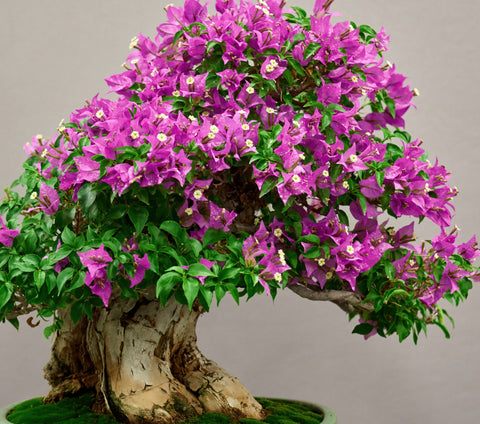
Several techniques are used to promote the best growth of such greenery. These techniques, once used, provide a healthy bonsai plant that can last for centuries to come. In fact, these plants look so mature that you can’t really judge their age with their personality, as even the young ones look more mature than their age. These plants are actually a dwarf version of their original specimen.
How To Grow Bonsai Plants?
Many ways allow us to experience the joy associated with growing and managing bonsai plants online. If you are a novice beginner and wish to get a feel of the plant at first, purchasing a well-grown variant is always a better idea. It will allow you to serve the bonsai without worrying about its growth prospectives. However, there are other ways to experiment with such greenery:
✦ From Seed
The technique of growing a bonsai through seeds is called ‘misho’ in the Japanese dialect. Propagating bonsai plants from scratch is a pretty rewarding and satisfying experience in itself. The process for sure asks one to stay strong and patient throughout, but the results are overwhelming, too!
However, aiming to witness the magic of bonsai beginnings might take about three years or more of consistent practice and patience. Start by purchasing bonsai seeds from online gardening stores like ours, and remember that these grains are no more special than the usual tree seeds.
However, remember that not every tree can ease out into a bonsai version. Also, it is better to choose the seeds which belong to the local trees acclimated to the local climate; otherwise, you will need to put the seeds under special treatment to let the climate work in their favor; this process is called stratification.
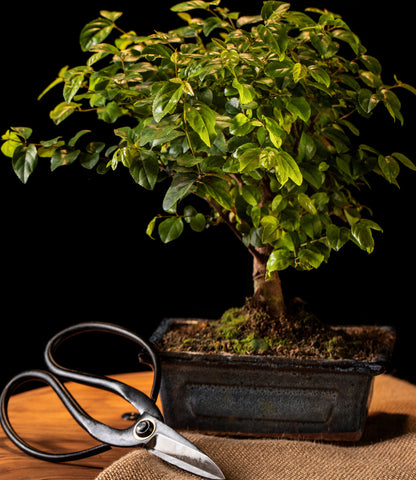
Once you have the seeds, layer the bonsai pots with some draining material like lava rock and then add a layer of the potting mix. Sprinkle the seeds on the topsoil with enough spacing in between and add a thin layer of plant soil over them, compacting the earth with fingers.
From this point on, be particular about keeping the soil moist at all times. Also, the seedlings should sprout in a matter of weeks, and you can shift the individual seedlings to their separate containers after a year. The ideal time to perform this process is before the spring, as the seeds will germinate during Spring and flourish in the summer.
✦ From Cuttings
Propagating bonsai indoor plants through cuttings take us one step closer to the end of the process. However, keep in mind that even through cuttings, it will take enormous levels of patience to be able to see a full-fledged bonsai plant growing in the surroundings.
Pick a well-grown existing tree to cut the cuttings; all you need is to cut five to ten centimeters long branches with a one-eighth-inch thickness. Make forty-five degrees cut at the end of these tiny branches to enable them for further propagation.
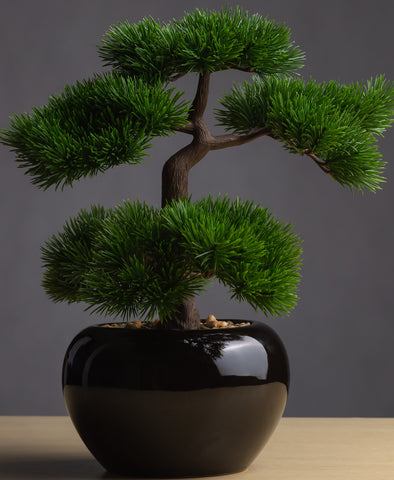
Begin by layering the container with a draining substrate like grit and pour a layer of the well-nourished potting mix. Settle these cuttings in the soil by making two centimeter-long holes; they will begin growing in a few weeks. The best time to achieve this is during the spring and summer seasons.
Styling & Shaping Tips For Your Bonsai Plants:
Once you have established a firm base of these bonsai fruit plants, either through seeds or cuttings, now is the time to decide the shape in which you wish your miniature tree to turn. Although it is not a simple task to master in your first experiment, we are sure that you will get a hang of it after consistent practice. There are two primary types of shaping techniques involved in this art, as follows:
1. Pruning
If you are a greenery enthusiast, you already know the importance of pruning your plants. No matter which greenery, trimming them is as necessary as hydrating them on time. However, when it comes to bonsai plants, this activity takes the front stage for how well you prune your plants will decide their appearance. Branch cutter and pruning shears are commonly used for performing this activity.
Pruning bonsai plants is done with a view to making them imitate the appearance of their original counterparts. Usually, you can enroll in the process of pruning when the spring knocks on the doors. Although trimming hows and whys can really differ from one bonsai to another, some basic situations that demand pruning are:
A. Two branches of equal heights on the trunk, so cut one and keep another.
B. Branches carrying twisted growths.
C. The disproportionate thickness of branches at the tree top.
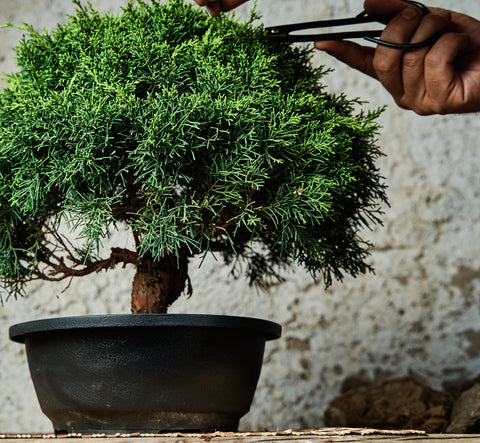
2. Wiring
This is a technique of shaping the bonsai plants that stays true to its name; one actually uses an aluminum or copper wire to bend the miniature trees in the desired direction. This process is quite effective and does turn the plant’s inclination to a satisfactory level of copying the actual tree.
This technique can be performed at any time of the year; however, a point of consideration is to remove the wires before they start digging the flash of thick branches.
Some Advanced Bonsai Styling Techniques:
✦ Defoliation
This technique requires one to cut all the leaves of the plant - remove the foliage to make way for fresher growths that are smaller in size.
✦ Deadwood
It is a common imitation of nature and, thus, makes the bonsai plants look even more impressive. Here, Jin is part of the bare-stripped branch, and Shari is part of the trunk that is bereft of bark.
✦ Surface Roots
Also called Nebari, the surface roots are the plant’s root flare that gives them a distinct personality. These can be achieved either by pruning the roots in a downward direction or through the process of air layering.
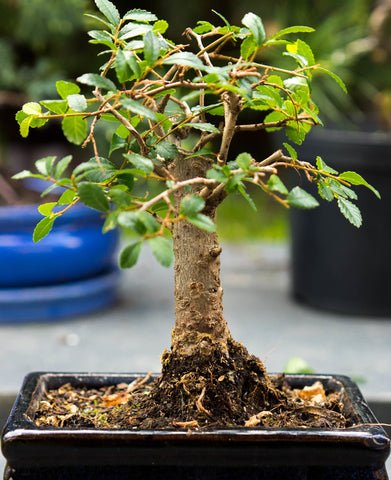
✦ Trunk
The bonsai’s trunk is actually what makes it the most bonsai, as the trunk gives an impression of a mature tree in a small container. Creating a visually enticing trunk through Nebari or other tapering techniques surely makes the plant look surreal.
✦ Rock Planting
Whenever you see a garden growing out of rocks, remember that the chosen plants have struggled for apt nutrition to grow. One may also experiment with bonsai rock planting, as such an environment can be copied.
✦ Grafting
Through this technique, one may fuse a branch, shoot, and root to the existing bonsai plant. It is often used to add branches to a bonsai or grow new bonsai plants.
How To Take Care Of Bonsai Plants?
Bonsai is the patient art of caring for these plants over time to witness their peak growth. Although these plants are pretty hardy-looking due to their resemblance with the mighty trees, they are actually more delicate than our usual house plants. Here’s how to stay attentive to these plants:
✦ Placement
It is crucial to understand that the trees meant for outdoor areas should be planted outdoors and vice versa. Also, ensure the picked bonsai plant is local to your area so it faces minor issues in the growing process. Moreover, even the already acclimatized bonsai plants can require overwintering when the climate outdoors is freezing. Further, pick a spot that imposes lighting as per the requirements of your chosen specie.
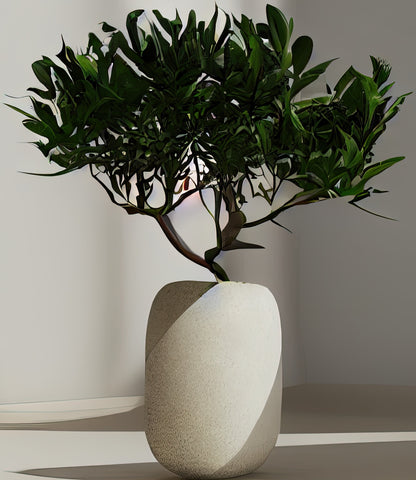
✦ Watering
Bonsais are basically big trees having a small structure assigned to large and narrow containers, so these can quickly absorb all the water you pour. It is crucial to stay attentive to the soil’s dryness and hydrate your bonsai with a watering can when you catch the soil on the drier side. Also, restrain from overwatering if you don’t wish to cause a root rot situation. The goal is to keep the soil moisturized while letting the excess water drain out.
✦ Re-potting
The bonsai plant will grow more prominent through the passage of years and your consistent practice. Re-potting it at least after every two years in bigger bonsai ceramic pots is a must to keep it healthy and joyful. Without re-potting, the bonsai will tend to become pot-bound, leaving no room for water absorption and storage.
✦ Fertilization
Fertilizing your bonsai plants is an integral part of caring for them, as it will overcome any nutritional deficiencies. Feed your bonsai with a solid or liquid organic fertilizer in measured doses to let it flourish with more grace. It should be treated with a nutritional booster in the growing season; however, the quantity and repetitiveness of this process is something that entails the tree species.
Conclusion:
Growing a bonsai plant is a never-ending art form that makes the gardener more at peace. This technique seems pretty enticing to every plant lover out there, and it might seem difficult to follow through, but once you begin this joyful cultivation technique, you are bound to fall in love with the process.
Indulge in the art of growing a bonsai in your backyard and enjoy the bonsai plants benefits. These miniature versions of the magnificent trees will make your garden stand out, becoming the highlight of your greenery. These plants are not only gorgeous, but they also outcast your dedication and care for them.
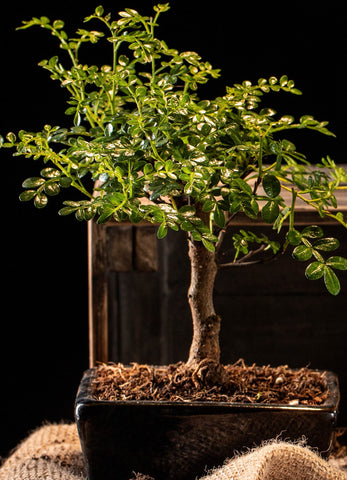
Whether you wish to begin bonsai gardening from scratch or take over from the nursery, from indoor bonsai plants to bonsai flower plants, the options are numerous. All bonsai variants are available in online stores to reach your home and make your garden look even more stunning!
FAQs About Bonsai Plants In India
Ques: Can I Grow Bonsai In A Regular Container?
Ans: The bonsai pots differ from the regular planters in structure. One may pick any planter that is oval or rectangular with subtle depth.
Ques: Is It Hard To Grow Bonsai?
Ans: We won’t lie to you that it is easy to grow them because bonsai plants take care and attention. However, if you proceed step by step after understanding the basics and learning through the journey, you will find the process more satisfactory than complex.
Ques: Are Bonsai Plants Pet-safe?
Ans: The toxicity of a bonsai species depends on the tree species it imitates, so it is suggested you understand the chosen plant before exposing it to your tiny ones.
Ques: How Long Does It Take For A Bonsai To Mature?
Ans: The maturity cycle of every bonsai plant depends on various factors, mainly on the growth prospects of the chosen tree specie.
Ques: What Is The Lifespan Of A Bonsai?
Ans: It might seem like we are blabbering, but your bonsai can have the potential to live for up to a thousand years! That’s right. Plus, in typical situations, when the bonsai is well-cared for, it will live for about fifty to hundred years.


